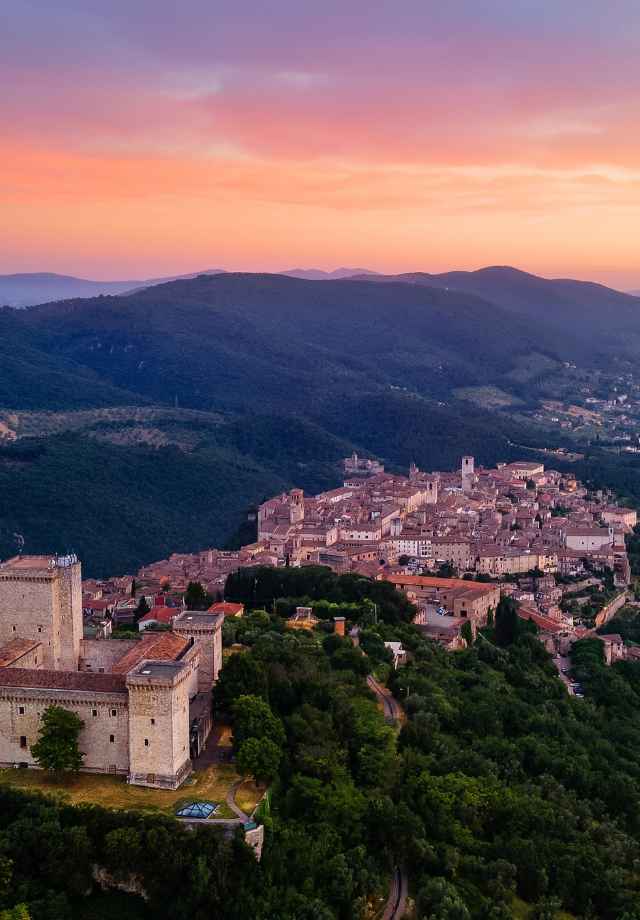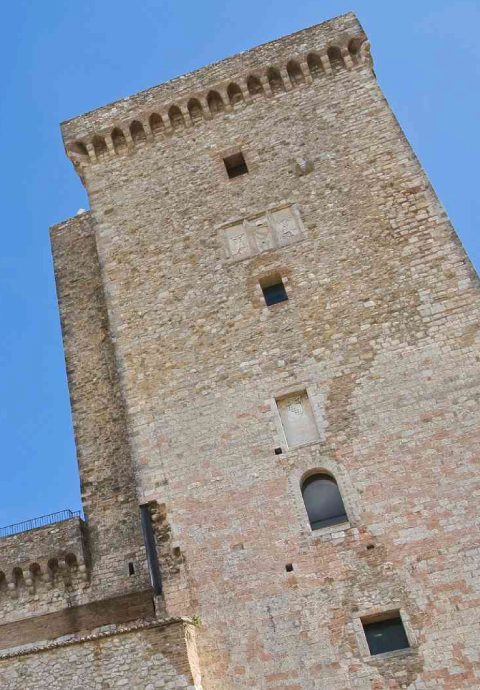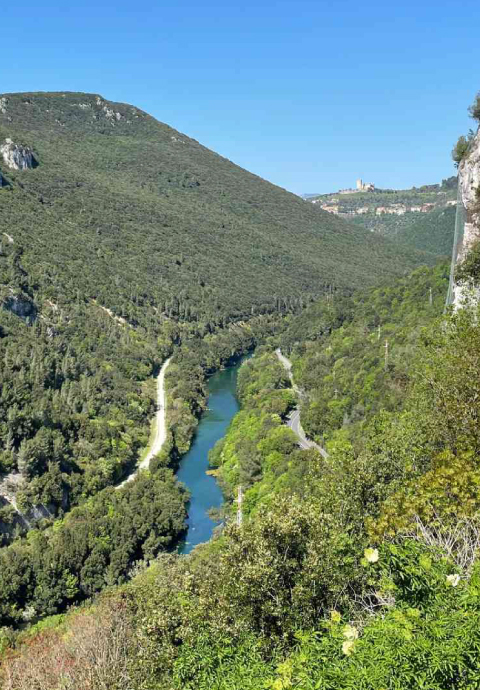Its splendid palaces overlooking the main squares, the Cathedral of St. Juvenal and the admirable works contained therein, the intriguing complex of Narni Sotterranea that year by year fascinates with new stories and new discoveries, the Museo Eroli that guards the glorious past of Nequium first and Narnia later, and the austere bulk of the Rocca Albornoz that dominates the town and protects it from above, are just some of the many attractions to be discovered in this place where everything speaks of history, art and culture.
And as beautiful as Narni is, so is its territory made up of hamlets that were once the castles that defended it and that, following the main routes stretch toward Terni to the north, and toward Otricoli to the south.
The ancient history of Narnia
The oldest findings are kept within the archaeological section of the Eroli Museum, suggesting that the heights of the Narni territory were inhabited since prehistoric times. It was from the end of the Bronze Age that settlements were established including the fortified one to which the Umbrians – in the Iron Age – gave the name Nequinum.
Romanization and the birth of Narnia
The first record of the impregnable oppidum of Nequinum is given to us by Titus Livius when in Ab Urbe Condita he tells how the Romans in 299 B.C. managed to conquer, after more than a year of siege, the fortified settlement by having two local people help them.
It was from that year that a Latin colony was deduced to which the name Narnia was given in honor of the nearby river Nahar, today’s Nera, which became the sentinel of this strategic junction along the Via Flaminia, which, just below Narni near the Bridge of Augustus, split into the two branches: one going toward Carsulae the other toward Interamna Nahars, today’s Terni.
Authors such as Tacitus and the finding at loc. Le Mole in Stifone of a shipyard tell that the Nera was navigable and that Narnia could have easy access to the Tiber and thus relations with Rome through this and the Via Flaminia.
The town hall in the imperial age
Narnia became a municipium after the social war in 88 BCE and was ascribed to the Papiria tribe. Among the most impressive works of the monumentalization plan of the Augustan age we can include with merit the Augustus Bridge, whose huge span still exists and shows off its majesty even today at the side of the bridge crossing the Nera along the Via Flaminia. During this period, Umbria Felix became a place for the construction of villas such as those of Pompeia Celerina, a very wealthy mother-in-law of Pliny the Younger, who, in addition to Narni, also owned villas in Ocriculum.
Another engineering work that was built between AD 24 and 33 is the Aqueduct of the Forminathat can still be visited today. In those very years, in 33 AD, Marcus Cocceius Nerva was born in Narnia who became emperor in 96.
Interestingly, according to Tertullian, writing in the late second century, it was in Narnia (as in Ocriculum with the goddess Valentia) that a local god by the name of Visidianus was worshipped.
Very rare are the necropolis and its finds. The most important burial area is the one found along the walls and the Via Flaminia, in the present Cathedral area, where according to tradition St. Juvenal was buried in 376.





